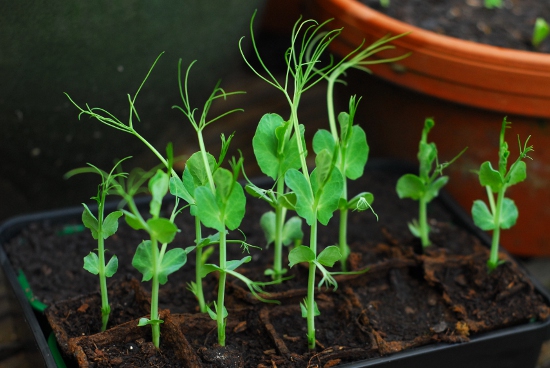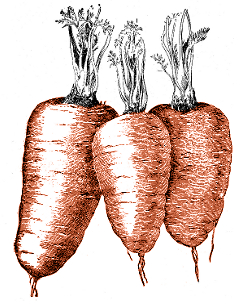Posts tagged ‘sweet pea’
Posted in Garden Diary, Photobloggery, The Old Garden In Bristol on Saturday, December 1st 2012 (8.36 PM).
This week, it really feels as if the garden is properly getting itself going. More and more insects are out and about, and more things are starting to come alive. The lettuce and calendulas sown three weeks ago have just made their first appearance above ground, and the pea seedlings which have been growing on the kitchen windowsill are getting larger and larger, stretching their tendrils like the most grotesque of scarecrows. Today I started hardening them off ready for planting out; I probably should have done it earlier.

More peas will start germinating soon. The first batch of this year’s potato crop went into the ground today too – well, into their container. This year we picked Red Duke Of York, as something we are unlikely to see in the greengrocers, and I’ve tried to squeeze four tubers into the container rather than last year’s three. The second batch will be planted in about a month’s time.
To get the potatoes, we popped over to the Riverside in Southville. Naturally, we were rather tempted by their selection of herb plants. Possibly too tempted: intending go there purely to get potatoes, we also came home with a black peppermint, some sweet peas, and two fennel plants. The fennel is instead of the dill we grew last year; I will explain more about that later.
black peppermint, calendula, fennel, lettuce, marigold, mint, pea, peppermint, potato, spring, sweet pea
Posted in Experimentation, Garden Diary, Retrospective, The Old Garden In Bristol on Saturday, March 17th 2012 (3.59 PM).
A bit nippy out in the garden today: most certainly not as springlike as other days, with dark clouds massing overhead. Not at all like the warm, insect-filled garden of last weekend. Still, I did the things I meant to do: replanted the pea seedlings in their final location, sowed more peas to germinate on the windowsill, scattered a few “surprise” annual flower seeds in spare corners, and retreated to the sofa before the rain broke.
The pea seedlings have, like last year, gone in a box to stand on the garden wall. I should have transplanted them earlier: they were getting rather stuck in their tiny modules. The next batch of peas will start their hardening-up rather earlier, so they can be transplanted outside rather earlier too. The fennel I repotted last week is looking nicely at home, plenty of feathery new growth coming from the heart of both plants. The sweet peas are not so happy, still looking rather listless and floppy, so I have given them a bit more scaffolding to climb up: horizontal strings wrapped around their cane pyramid.
I said last time that I would explain a bit more about the fennel, and why we decided to get some. It is, essentially, to make up for last year. We tried to grow dill last year, and it was a bit of a failure.
If you look at a packet of dill seeds, you see a rather idealised picture: a big pot with a big dill plant inside it, leaves pouring down like a waterfall. Of course, if you’re growing dill for food, that’s what you need, because you need a good bunch of the individual fronds to put in your gravadlax. However, trying to grow dill from seed, that wasn’t what we got at all. The first plants we sowed in modules and tried to pot on: that failed entirely. The second plants we sowed in their final location; they put out a few leaves, then immediately bolted to a few feet high and flowered. Hardly any leaves at all, not even enough to make a single meal out of. The flower heads are pretty: finely-divided cadmium-yellow umbels; but, to be honest, I like eating dill too much to be satisfied with that. Why did it happen? I suspect the pot we put them in was rather too shallow, and the plants’ roots felt rather too cramped for comfort.
Now, in all the books I’ve read, it says: “don’t grow dill and fennel together”. They might give a reason, too, but if they have I haven’t absorbed it, come away only with the idea that they don’t work well together for some reason. I picture the real explanation being like primary school parents’ evening: “honestly, we love little Fennel, and he’s fine on his own, but when him and Dill get together they do tend to egg each other on. Mrs Anderson still can’t bear the sight of pencil shavings, and it was four months ago now…” Anyway, whatever the reason is, as we were trying to grow dill last year, we thought that fennel must be avoided at all costs. As I’m now completely exasperated with trying to get dill to grow, this year it is the fennel’s turn. We don’t have room for more than a couple of bulbs, so we won’t get more than a single side dish from it at the end of the season – fennel gratin is delicious, by the way. I’m more interested to see if its leaves can be used like dill, or if they will end up as purely structural plants for the summer – hopefully they will give the garden a more delicate sense of height than things-up-canes can provide.
dill, fennel, pea, sweet pea
Posted in Retrospective, The Old Garden In Bristol on Sunday, October 16th 2011 (9.05 AM).
This post is, unfortunately, going to be rather low on photos compared to those previous, because plants that aren’t growing well, are dying off or somehow going wrong, aren’t really inviting subjects for the camera. I’ve resisted the temptation, though, to title it “Failures”, because all of these plants gave something to the garden, even if it was just a clump of foliage or something for the local caterpillars to eat.
Pattypan squash: this is an example of why you should be careful what plants you let into your garden. We decided we wanted a pattypan squash plant: they can look rather attractive, and we always use plenty of squash in cooking. By the time we decided we wanted one, though, it was definitely a bit late in the season to be growing one from seed. We went down to one of the local garden centres; all the pattypans they had looked to have signs of mildew on their leaves. We bought the best we could find, but the signs of mildew did indeed turn into worse mildew. It fruited, but its fruits were hardly an inch across. Of course, I’ve heard since, this year has been a bad year for squashes, but I’m sure that a healthier plant would have had a better chance of success.
Dill: We love dill, particularly with salmon in the Scandinavian style, so dill had to be a must for the garden. We planted plenty of dill seeds, and they sprung right up, right away. But then they didn’t stop springing. Every dill plant we grew turned into a tall, spindly thing, four or five feet high but with barely any usable foliage. Pinching out the tips didn’t seem to help.
Spring onions: these we grew from seed, and they started out well. They seemed to be taking a while, but we weren’t too worried, having picked a variety with a low chance of bolting. Then, though, a period of hot weather followed by heavy rain ruined the majority of the plants, snapping the stems. A handful have grown back from that, but neither those nor the ones which avoided the rain in the first place have really reached a harvestable thickness.
Sweet peas: the idea with these was: companion plants around our green beans. The problem with them was: they grew too well. They grew around the beans, over them, taller than them, almost swallowing them up. And then didn’t even flower. The problem, maybe, is that sweet peas aren’t bred to grow in vegetable-quality compost, which is possibly an issue with any companion planting scheme that involves decorative and produce plants mixed in together.
Japanese saltwort: we spotted this in one of the local garden centres, the excellent Riverside co-operative. We bought it because it was intriguing, and unusual. It grew, grew well. The problem, though was that we didn’t really know what to do with it; and its heart quickly became dead and woody, the living parts straggling over the edge of its pot. I have the feeling it is one of those plants which, if not kept in a container, could easily take over an entire garden.
What to learn from all this? Well, next year, we’ll definitely be keeping our spring onions rather more sheltered. We’re on the hunt, too, for a different variety of dill to try. The most important thing to remember, though: however much we want a particular variety of plant in the garden, only let it come in if it’s healthy.
dill, japanese saltwort, pattypan squash, saltwort, scallion, spring onion, squash, sweet pea
Posted in Garden Diary, The Old Garden In Bristol on Saturday, August 27th 2011 (10.27 PM).
Not very much has been happening in the garden in the past couple of weeks. Although everything is still productive, now the peas have gone it feels as if things have started winding down for the winter already. Having said that, the beans are still going strong; we’re picking a good handful of runner beans every few days, with plenty more blossom coming, and the first green beans are nearly ready to pick. The sweet peas planted under the green beans are going well, too, some of them almost as high as the beans themselves.
Maybe part of the winding-down feel comes from the weather: lots of rain, with some very heavy downpours, which have broken a few stems. It’s also delayed our ongoing project to dig out the back bed, which we really wanted to have finished by now.
back bed, bean, diary, digging, green bean, runner bean, sweet pea, weather


